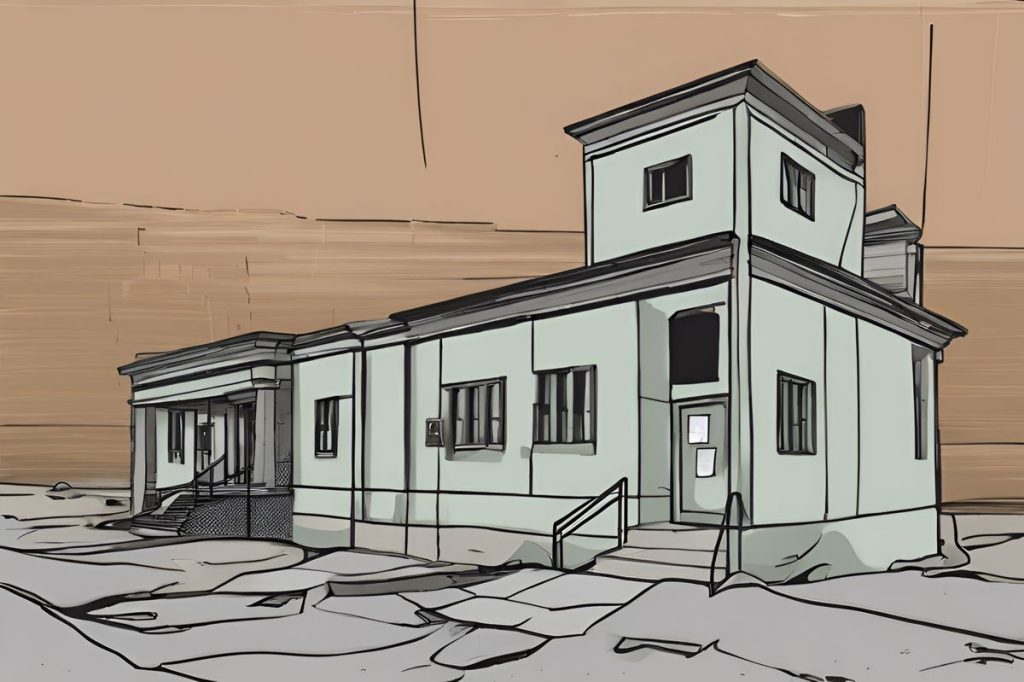The Amiandos Asbestos Mine in Cyprus, once a bustling hub of mining activity, now stands abandoned, leaving behind a polluted landscape and health issues due to asbestos exposure. Despite state remediation efforts, the site serves as a haunting reminder of the consequences of unchecked industrialization on community well-being.
What is the history and impact of the Amiandos Asbestos Mine in Cyprus?
The Amiandos Asbestos Mine in Cyprus, once a thriving mining community, has a complex history involving multiple foreign ownerships. Its closure left environmental devastation and health issues from asbestos exposure. Despite slow state remediation efforts, the site’s abandoned structures and polluted landscapes remain a reminder of the consequences of unchecked industrialization on community well-being.
The Discovery of a Bygone Era
Traveling through the heart of Cyprus, the remnants of the Amiandos Asbestos Mine can be unearthed, presenting a scene where time seems to have stood still. On a seemingly ordinary family road trip, an unexpected detour led to the discovery of the derelict miner’s hospital. The children’s excitement was palpable as they stumbled upon the ruins, urging their mother to witness the sight. Skepticism turned into awe as they ventured past the dilapidated entrance, adorned with striking graffiti that contrasted starkly with the crumbling facade.
Inside, the once bustling corridors and rooms lay in silent testimony to a past era. The ghostly presence of medical professionals and patients seemed to echo through the abandoned wards. The architecture, from the grand windows framing the natural beauty outside to the remnants of vibrant paint on the walls, hinted at a bygone sophistication now overtaken by decay and neglect.
A Community Forgotten
The hospital is but one part of a larger narrative that encompasses the entire village of Amiandos. Once a thriving mining community, it now faces the reality of being forgotten. Conversations with Kriton Kyriakides, the village’s mukhtar, revealed a deep frustration over the lack of support and attention from the state. His vision of transforming the sturdy, yet vacant, buildings into affordable housing or community centers is hindered by bureaucratic indifference and a lack of resources.
Across the island, this sentiment of neglect resonates with local leaders, who often feel sidelined in the pursuit of development that rarely benefits the local populace. Despite government claims of revitalization, the actual efforts seem misaligned with the needs of these rural areas, favoring short-term gains over sustainable growth and community welfare.
A Tumultuous History
The asbestos mine’s history is a complex tapestry interwoven with the fates of the local Cypriots and foreign interests. Established in the early 20th century, the mine changed hands multiple times, from its acquisition by an Italian entrepreneur intrigued by the island’s natural resources to its eventual operation by Danish investors for several decades under the Cyprus Asbestos Mines Ltd.
However, the decline in asbestos demand led to the mine’s closure and bankruptcy under the Archbishopric of Limassol’s ownership. The environmental devastation and the health repercussions for the local community, primarily from asbestos-related diseases, were left as an unfortunate legacy. While previous operators absolved themselves of responsibility, the burden fell on the church and the community to confront the mine’s toxic aftermath.
The Environmental and Cultural Impact
The Amiandos mine not only left a scar on the landscape but also on the lives of those who toiled within it. Asbestos fibers, once seen as a valuable commodity, became synonymous with illness and environmental contamination. The effects of the mining operations are still visible in the desecrated hillsides and the polluted river Kouris, as well as in the abandoned structures that dot the landscape.
Efforts by the state to remediate the area have been ongoing but slow, leaving locals to contend with the physical reminders of an industry that once sustained but ultimately betrayed them. The tale of Amiandos serves as a stark lesson on the consequences of unchecked industrialization and the importance of responsible development that prioritizes the well-being of both the environment and the community.
Iole Damaskinos’s Insights
Iole Damaskinos, a journalist with two years of experience, has provided a poignant account of the Amiandos site, weaving together the personal narratives of those affected by the mine’s legacy and the socio-economic challenges faced by the community today. Her background in permaculture, health, and archaeology enriches her perspective on the story, allowing her to appreciate the complexities of human interaction with the land and the impact of industrial activity on both cultural heritage and public health.
What is the current state of the Amiandos Asbestos Mine in Cyprus?
The Amiandos Asbestos Mine in Cyprus now stands abandoned, leaving behind a polluted landscape and health issues due to asbestos exposure. Despite state remediation efforts, the site serves as a haunting reminder of the consequences of unchecked industrialization on community well-being.
How has the local community been impacted by the closure of the Amiandos Asbestos Mine?
The closure of the Amiandos Asbestos Mine has left the local community facing health issues from asbestos exposure and a landscape scarred by environmental devastation. Local leaders express frustration over the lack of support and attention from the state, hindering efforts to revitalize the area for community benefit.
What is the historical significance of the Amiandos Asbestos Mine in Cyprus?
The Amiandos Asbestos Mine has a complex history involving multiple foreign ownerships, from Italian entrepreneurs to Danish investors. The decline in asbestos demand led to the mine’s closure and bankruptcy, leaving behind a legacy of environmental devastation and health repercussions for the local community.
What lessons can be learned from the legacy of the Amiandos Asbestos Mine?
The story of the Amiandos Asbestos Mine serves as a stark lesson on the consequences of unchecked industrialization and the importance of responsible development that prioritizes the well-being of both the environment and the community. Efforts to remediate the area have been slow, highlighting the need for sustainable growth and community welfare in post-industrial landscapes.

